The Zephyr innovative growth chamber
The Zephyr project has developed a new, zero-impact growth chamber for forest regeneration material: a sustainable controlled environment where forest plants can grow, starting from the seeds, in a robotized nursery assistant. The continuous movement of trays with “mini-plugs” (Very small container plants in containers less than 37 cm3 in volume) guarantees an average environment (light, temperature and humidity) equal for each plant almost impossible to be obtained with ordinary growth chambers.
Key components of the new system include a rotating set of trays under an array of LED lamps, a robotic arm equipped with a camera, and wireless micro-sensors that keep tabs on the plants.
Forest plants need very specific conditions for ensuring seed germination and then an adequate growth with strong roots: providing these conditions is the only way to preserve biodiversity, as plants produced from cuttings are essentially clones.
The growth chamber is composed by:
- 10 shelves in continuous rotation; each shelve can contain 2 plastic trays of size 53 x 31.5 cm.
- An air conditioning system,
- An irrigation system,
- ·A track for the horizontal movement of the robotic arm carrying stereoscopic cameras.

One of the Zephyr growth chamber’s particular strengths is that it provides uniform conditions. In the current, “static” chambers and greenhouses, seedlings remain in the same spot for large stretches of time, and some are thus nearer to key components, such as lamps and coolers, than others. In the prototype unit, all seedlings benefit from the same amounts of light, moisture and warmth. Seedlings are placed on revolving trays, taking turns in the best spots. The system thus produces plantlets of consistent quality, with the strong roots they will need to survive after being transplanted.
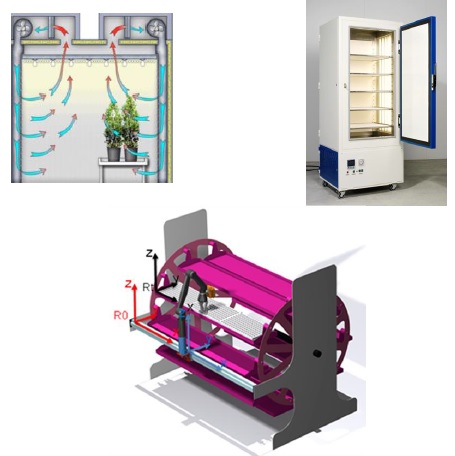
Figure II: Top: ordinary static growth chamber with the air flow; down: scheme of the Zephyr unit
Fig.II clearly shows how in an “ordinary growth chamber the seedlings closer to the air flow outcome are subjected to a lower temperature than the ones in the centre of the tray; the same is for the light. In the ZEPHYR system both light and fresh air come from the top and the rotating system guarantee average uniform conditions.
A further strength of the Zephyr unit is the replacement of the conventional light sources with use of specific Light Emitting Diodes (LEDs), due to its considerably lower energy consumption, reduced heat emission and extended lifetime of the light source. 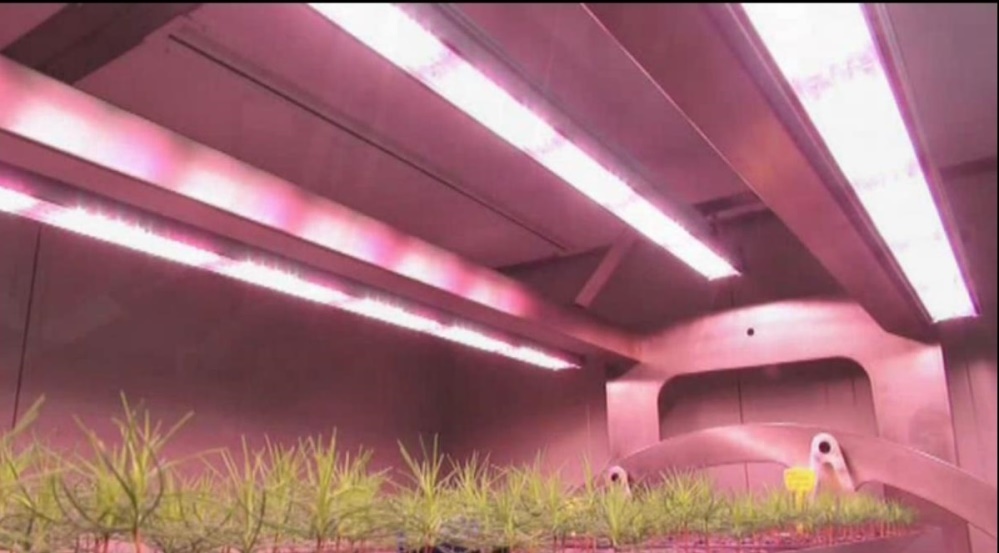 In the concept of intense cultivation the possibility of using LEDs instead of other artificial light contributes to major economic and environmental benefits. It is more cost efficient, improves the sustainable management of forest production and contributes to the environmental protection through a noticeable energy saving. It will also reduce the greenhouse gas emissions and, since the LED lamps do not produce additional warming, there will be further energy saving by reducing the air conditioning costs.
In the concept of intense cultivation the possibility of using LEDs instead of other artificial light contributes to major economic and environmental benefits. It is more cost efficient, improves the sustainable management of forest production and contributes to the environmental protection through a noticeable energy saving. It will also reduce the greenhouse gas emissions and, since the LED lamps do not produce additional warming, there will be further energy saving by reducing the air conditioning costs.
Figure III: three rows of special LED lamps inside the Zephyr growth chamber
Furthermore, the specific spectrum selected for the ZEPHYR unit reduces the typical red-blue peaks present in the traditional LED lamps and allows an optimal distribution of the frequencies, as shown in Fig IV. 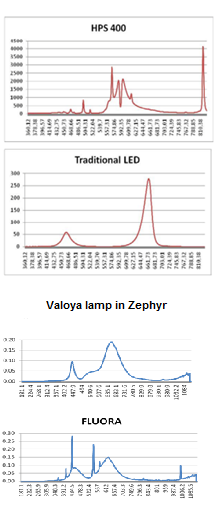 Several tests have been made in a previous research project to identify the best suitable LED light spectrum for different European forest species: the Zephyr lamps chosen have a robust design and special attention has been given to the thermal management to ensure high performance, without producing "waste-light" and thus saving electricity
Several tests have been made in a previous research project to identify the best suitable LED light spectrum for different European forest species: the Zephyr lamps chosen have a robust design and special attention has been given to the thermal management to ensure high performance, without producing "waste-light" and thus saving electricity
Figure IV: Scheme of the light spectra used in greenhouses and growth chambers compared with the Zephyr one: Sodium , Traditional LED, Zephyr LED and Fluorescent tube
The Zephyr unit is space and energy saving , with a daily average electricity consumption of 1,45 Kw (total max load 1,9 Kw) for the simultaneous pre-cultivation in 20 trays (10 shelves carrying 2 trays each).
In order to show such a low consumption in several fairs and exhibitions, the growth unit has been placed in a standard TEU container and fully powered with 20 photovoltaic panels placed in a foldable system on the roof of the container. The system allows an ordinary transportation via truck complying with the road transport rules.
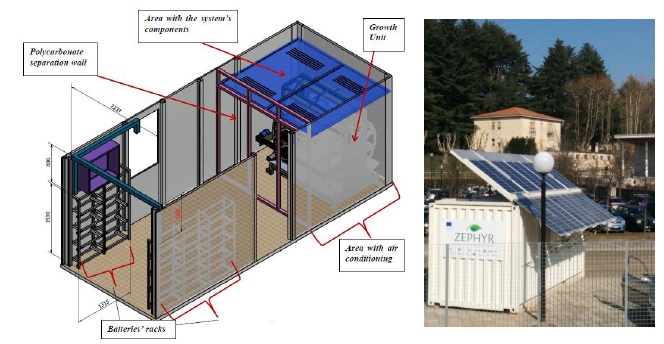
Figure V Left: Internal scheme - Right: The Zephyr unit fully operating with solar energy
Another innovation of the Zephyr project is the design and development of the new sensor for soil parameters and new sensors for shoot portions by optical detection measuring the shoot height (stereoscopic optical analysis) and ‘greenness’ (digital image analysis). This development deals with soil parameters by ‘stick’ sensor and shoot portion by optical sensors.
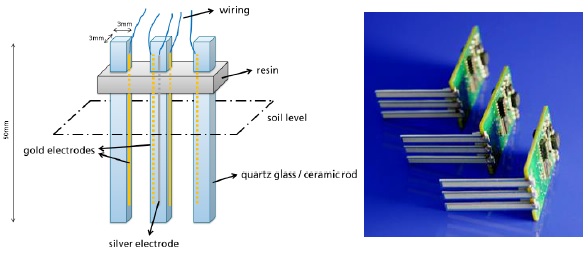
A production route for electrodes with high-throughput manufacturing methods for cost-efficiency was established: printing technologies like screen-printing play an important role for the production of sensor electrodes. To automate the process of fabricating printed sensor electrodes a robot-assisted production line was set-up, which allows different printing methods to be combined in a single run.
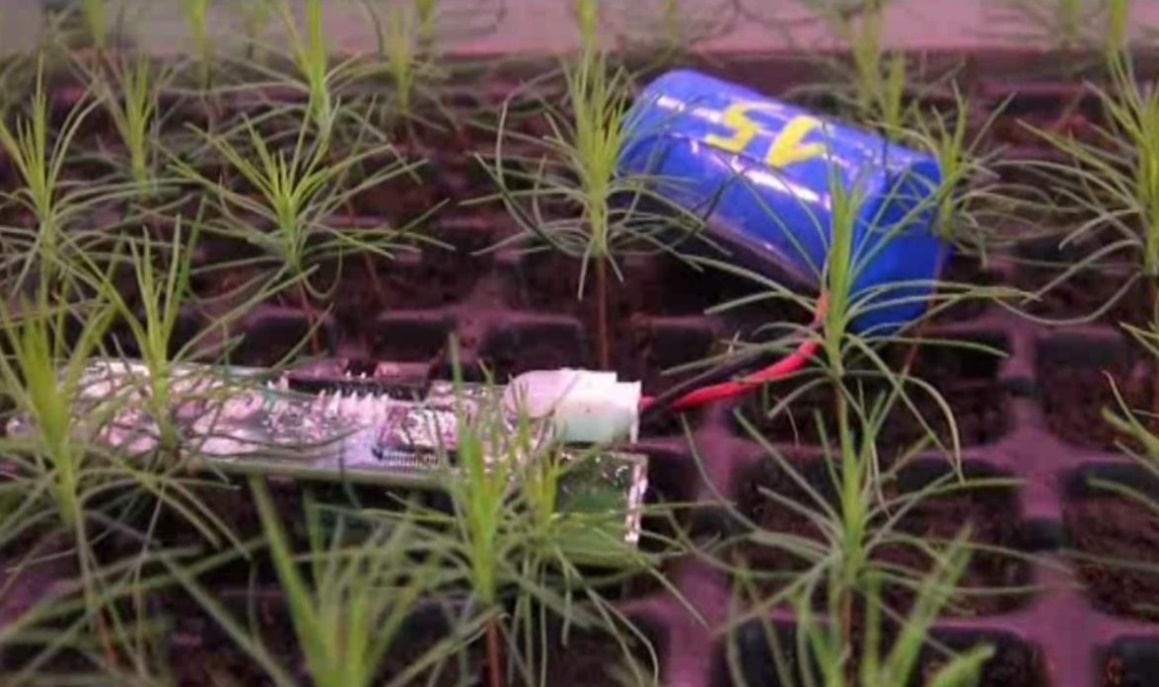

Figure VIII: Photos of the optical sensors for measuring the shoot height and ‘greenness’. From the left: zoom-in showing the dual cameras for stereoscopic imaging; typical position of optical cameras on top of seedlings; (b) optical cameras; green pixels achieved by a stereographic view.
The stereo camera has been mounted on a robotic arm able to take pictures of every plantlet in the system, by using the grid of the mini-pots as reference, together with the number of the shelf. The arm has also a gripper that will conduct some tests (not originally foreseen in the DoW) targeted to a future embedding in a fully automated production unit. The future goal is to develop a robotic arm capable to assist users to:
- Position the camera on the top of the right tray to take picture for further analysis;
- intervention of eventual replacements of a single plant in the tray inside the unit, in order to ensure that at the end of each growth cycle all the trays will be ready for their delivery;
- transplant in pots at the end of each cycle (for the plants that will continue their growth cycle in the nursery);
- place an eventual additional wireless sensor in each tray (for the storage or transport environment);
- put the trays in stacks, pack the stacks for their delivery or storage at low temperatures.
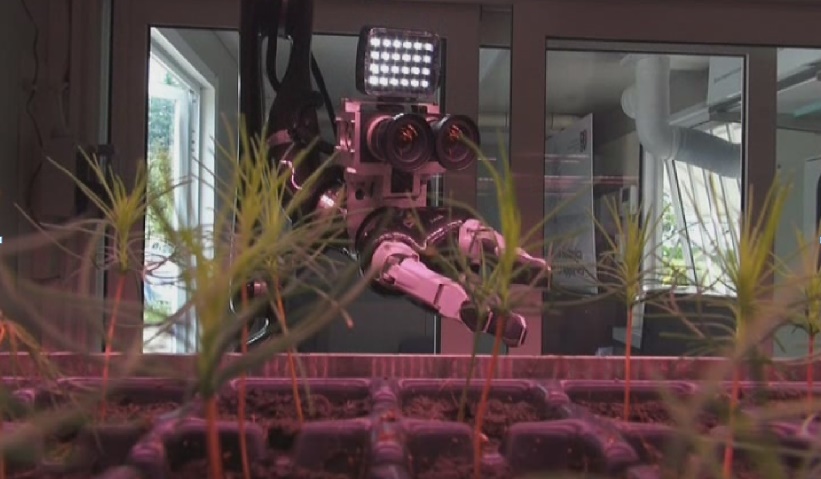
more videos and pictures are available on the project web site www.zephyr-project.eu
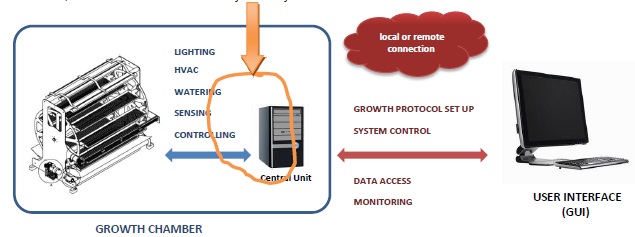
Figure X: The control unit
The control unit developed deals with the following architecture offering dedicated hardware interfaces to connect all Zephyr components and also software interfaces to exchange data from the different modules.
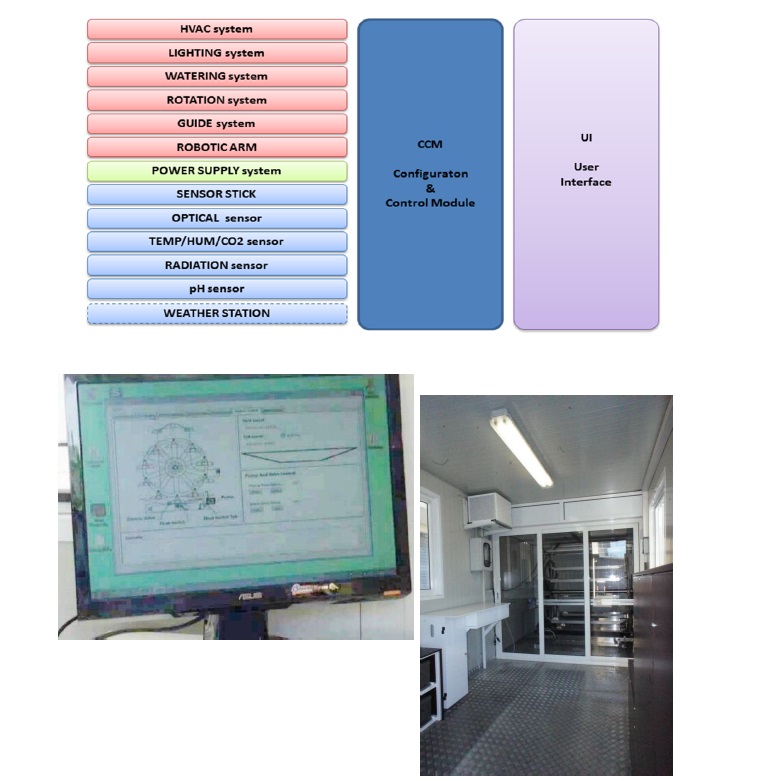
Figure XI –Architecture of Zephyr system, the growth unit inside the container and a screenshot of the control software
Competitive advantages of the new product
Tests performed during the project have demonstrated that:
- Seedlings of almost all the tested species show good growth performances when cultivated under Valoya LEDs lights, better than under the fluorescent ones.
- LED lights strongly speed up phenological stages of seedlings, reducing the time for seedlings emergence and apical bud closing.
- The ZEPHYR rotating system allows the production of a high amount of seedlings, in a real short time, ready to be used for reforestation programmes, green infrastructures and valuable species production.
The competitive advantages of the Zephyr system are analysed in the following sections, compared with ordinary nurseries and greenhouses with cultivation in pots and with other growth chambers. 3 different types of customers are considered:
1) First level customers: forest nurseries, that are the main target in the market
2) Second level customers:
2a) forest owners (clients of the forest nurseries), given the large influence they have on the nurseries; in case of public bodies, these two types of customers often coincide;
2b) small nurseries acting as a re-sellers: they buy pre-cultivated material from large nurseries;
2c) Landscapers and urban planners, given the foresight on future demand for urban forests, green cities and green architecture (source [6])
3) Universities and research centres
Bulk production of forest plantlets, compared with an ordinary greenhouse with cultivation in pots
The advantages of the Zephyr system respect to greenhouses are:
- Surface saving up to 495%;
- Energy saving 85%;
- Time saving 74%;
- Water saving given by recovery and re-use of the exceeding water;
- Herbicides, pesticides saving 100% in the pre-cultivation phase; given the increased robustness of the seedlings, the amount of such chemicals will be reduced also in the further growth phases;
- Up to 11 growth cycles per year.
Surface saving
According to the following scheme of the Zephyr unit, the surface of the system containing 10 shelves with 20 trays is 1,562m x 1,169m = 1,826 m2. Since the dimension of a single tray is 310x530 mm, it has a total surface of 0,1643 m2. The same surface allows only 11,11 trays “on the floor” in an ordinary greenhouse, meaning a surface saving of 45%. Since the growth in the machine is independent from the outdoor climate and conditions, the machine allows up to 11 cycles per year[1], meaning up to 11 times more than in the ordinary season-depending nursery; the total surface saving is consequently up to 11 x 45% = 495%
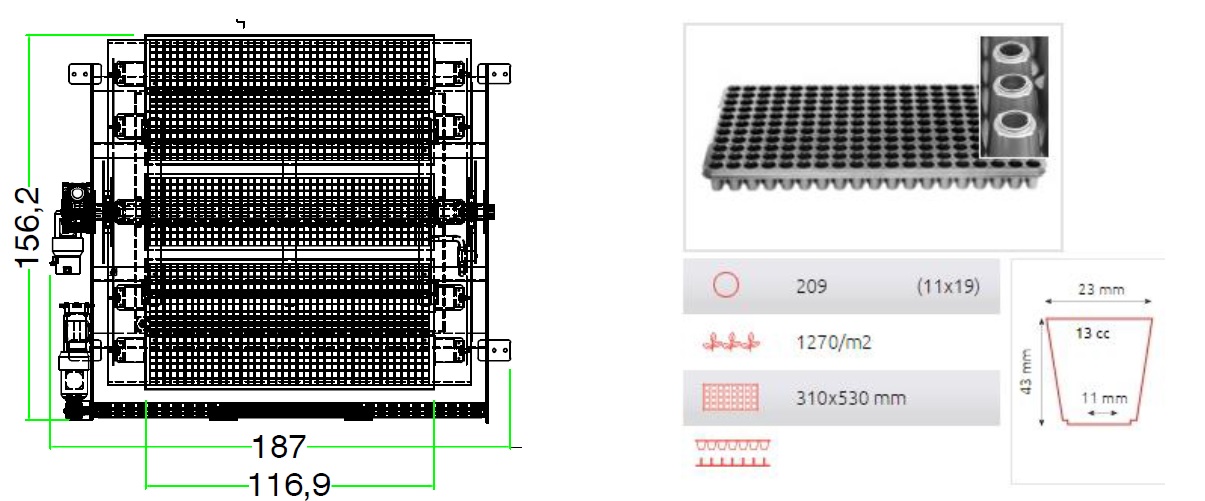
Figure XII – Plant of Zephyr system, the growth unit inside the container and a screenshot of the control software
It is to be underlined that the standard dimension chosen for the trays (310 x 530 mm) allows a different number of seedlings per m2 (from 870/ m2 to 3500/m2 , depending on the dimension of the mini-pots), more details at: http://www.herkuplast.com/en/program/QuickPot/Danish.html ;
Further calculations in the following section will use the most common dimension of 209 pots per tray, equal to 1270 seedlings per m2, as shown in the picture above
Energy saving
The energy saving is:50% by using LED lamps instead of ordinary/fluorescent lamps AND further 70% by using the rotation system, allowing only 3 rows of lamps for10 rows of trays, instead of one lamp for each row, as usually adopted .
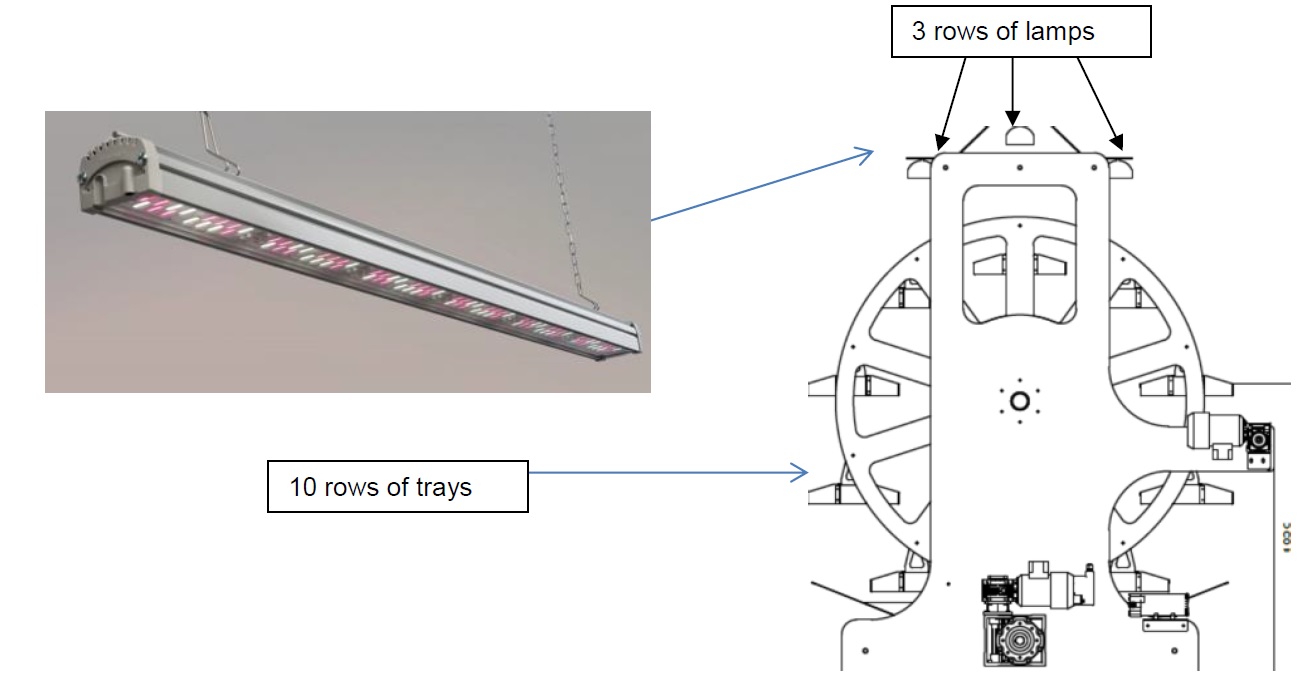
Figure XIII – Led lamps and their position in the Zephyr unit
Time saving
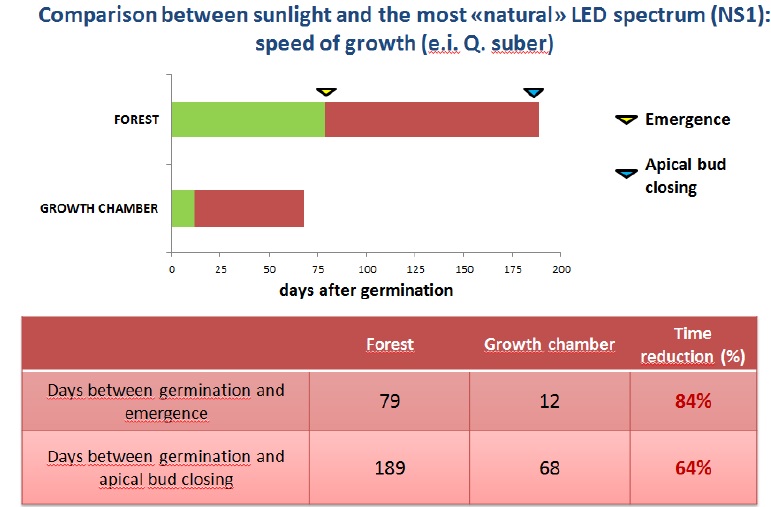
Figure XIV – Germination time reduction by using LED lamps
This average time saving, jointly to the independence from the outdoor conditions allows the Zephyr unit to run up to 11 cycles per year, assuming an average cycle duration of 30 days, plus 2 days preliminary operations per cycle , plus 14 days of maintenance between several different cycles
Water saving, given by recovery and re-use of the exceeding water
- The Water Application Efficiency (WAE) of the Zephyr system is close to 100%, due to:
- Water stored in a closed tank below the rotating system, avoiding any evaporation or dispersion;
- Irrigation is made only when needed, according to the data provided by the sensors;
- Only during the irrigation time, the immersion tub is filled and each shelf is immerged for a pre-defined time; when the next shelf is immerged, the shape of the tub allows the recovering of the dripping water;
- At the end of the irrigation cycle, the water remaining in the tub is recovered and sent to the tank;
- The condensation water coming from the HVAC system is recovered, too.
Micro-irrigation of container crops involves the use of emitters that deliver water directly to containers using a low pressure irrigation system; the WAE Water application efficiency of micro-irrigation systems has been reported to range from 44% to 72%[2].
Assuming a prudential value for the Zephyr system equal to 90% the water saving in term of increasing of WAE is between 46% and 18%, with an average of 32%
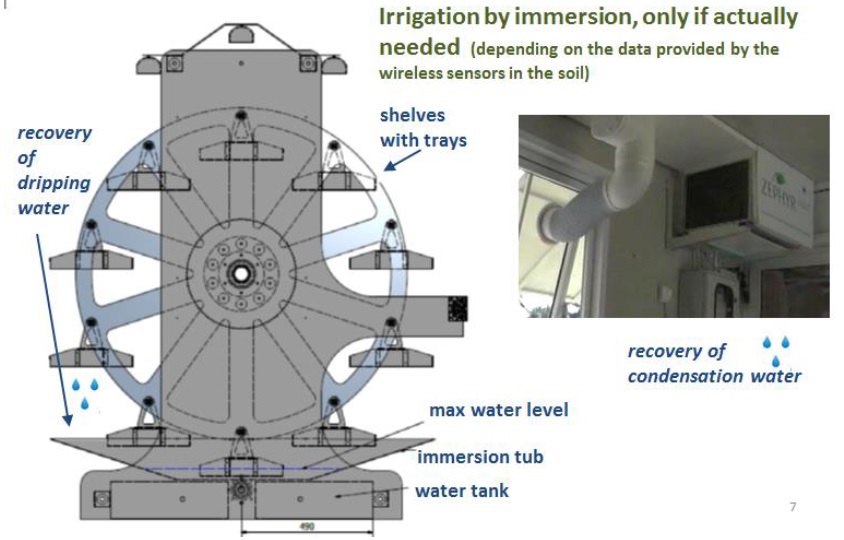
Figure XV – Irrigation system and water recovery
The full description of the competitive advantages and the market analysis is available in the Deliverable D7.2
